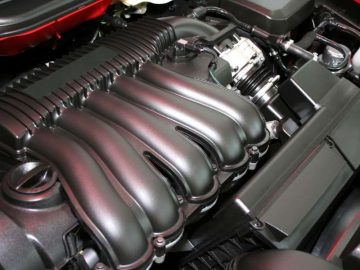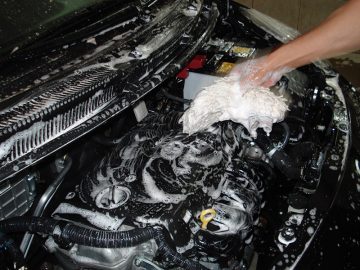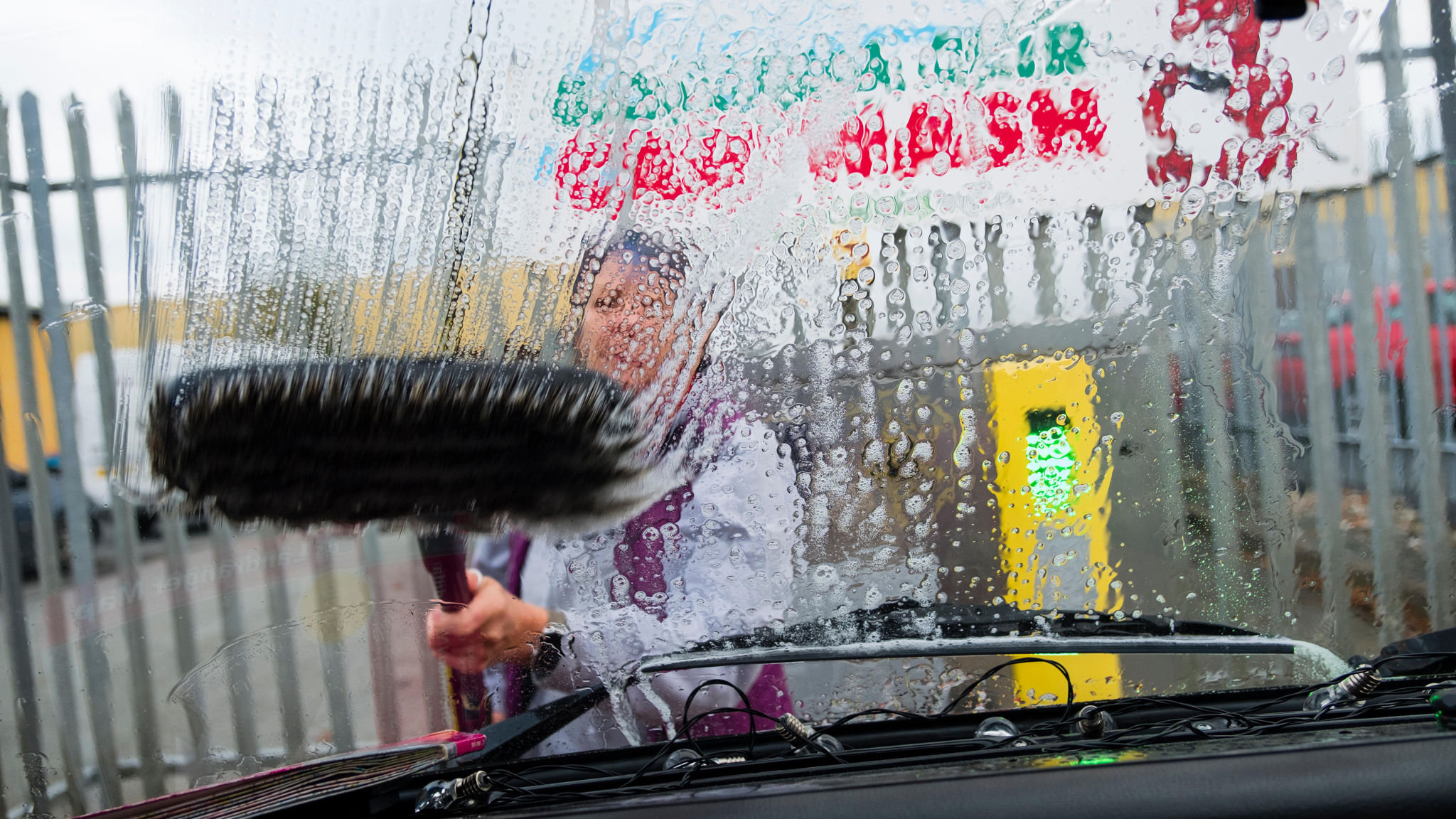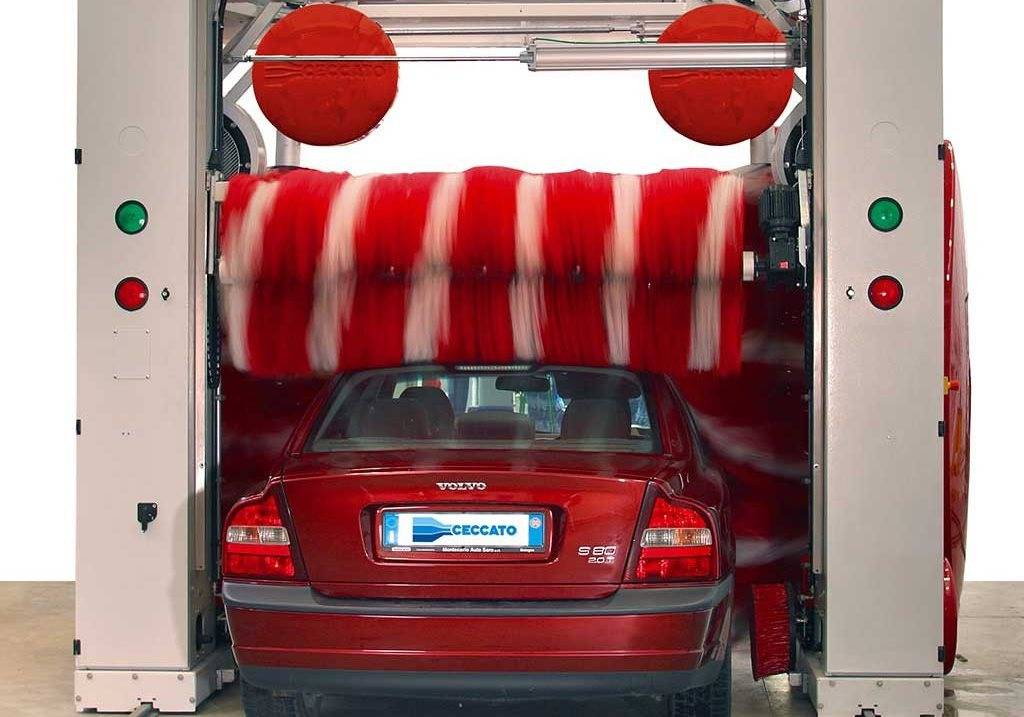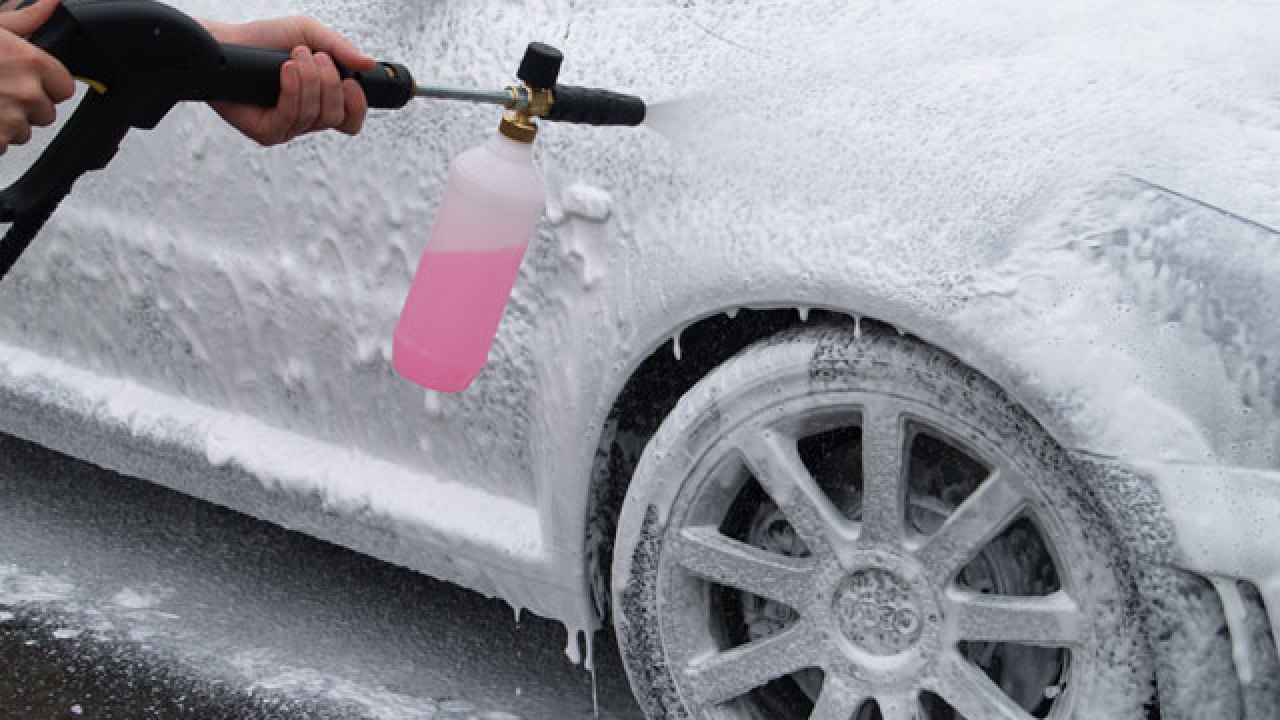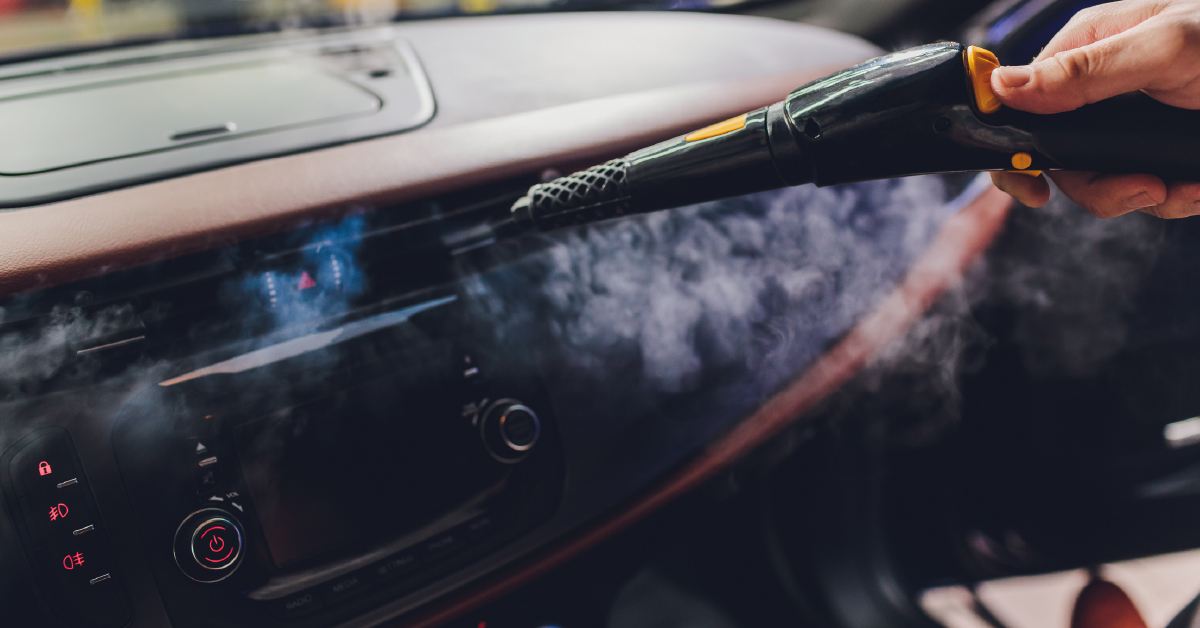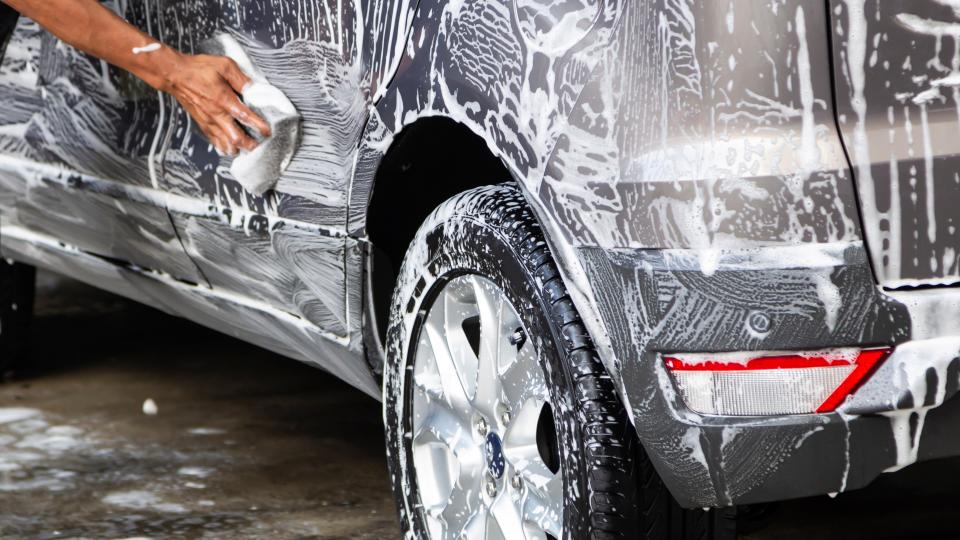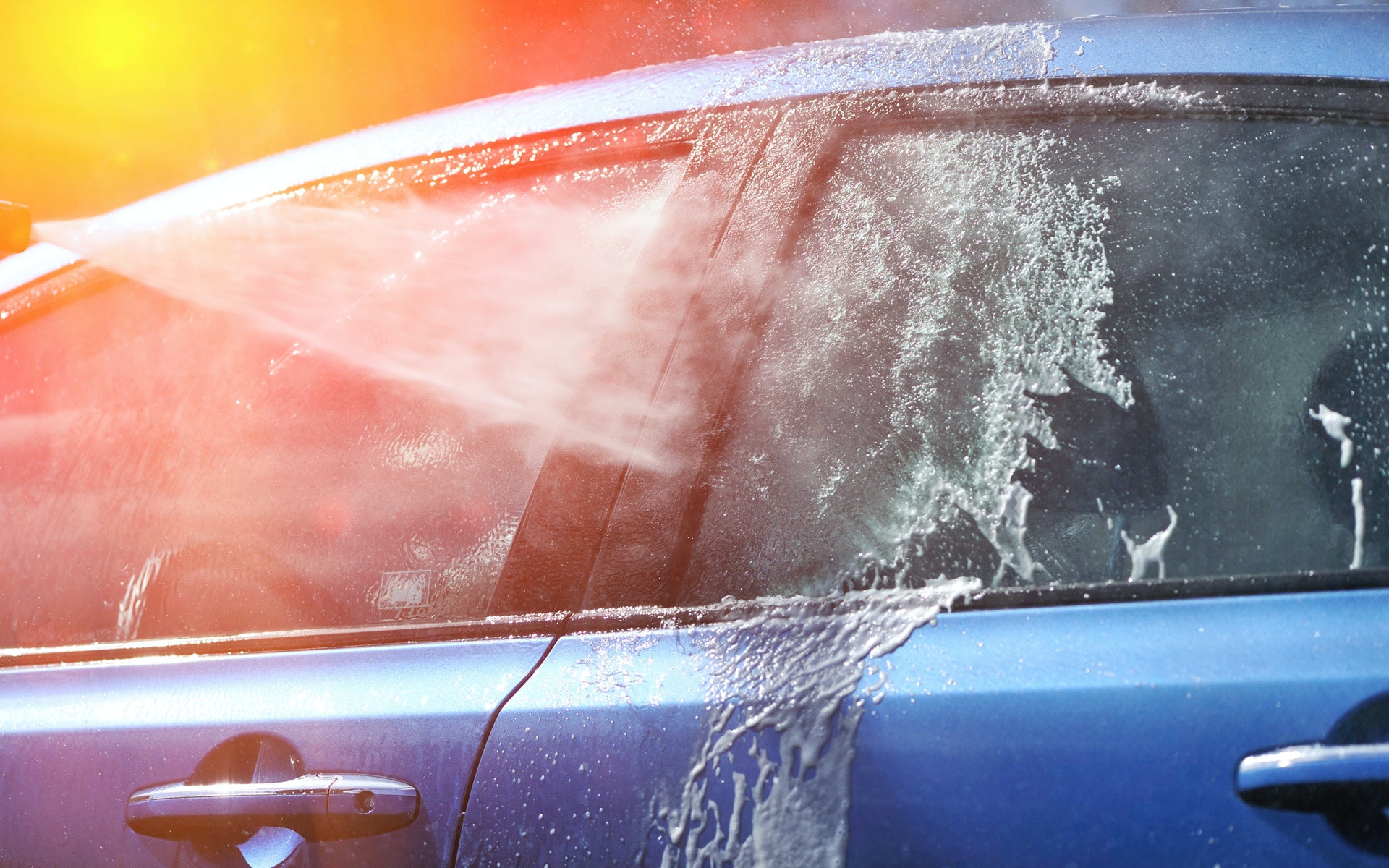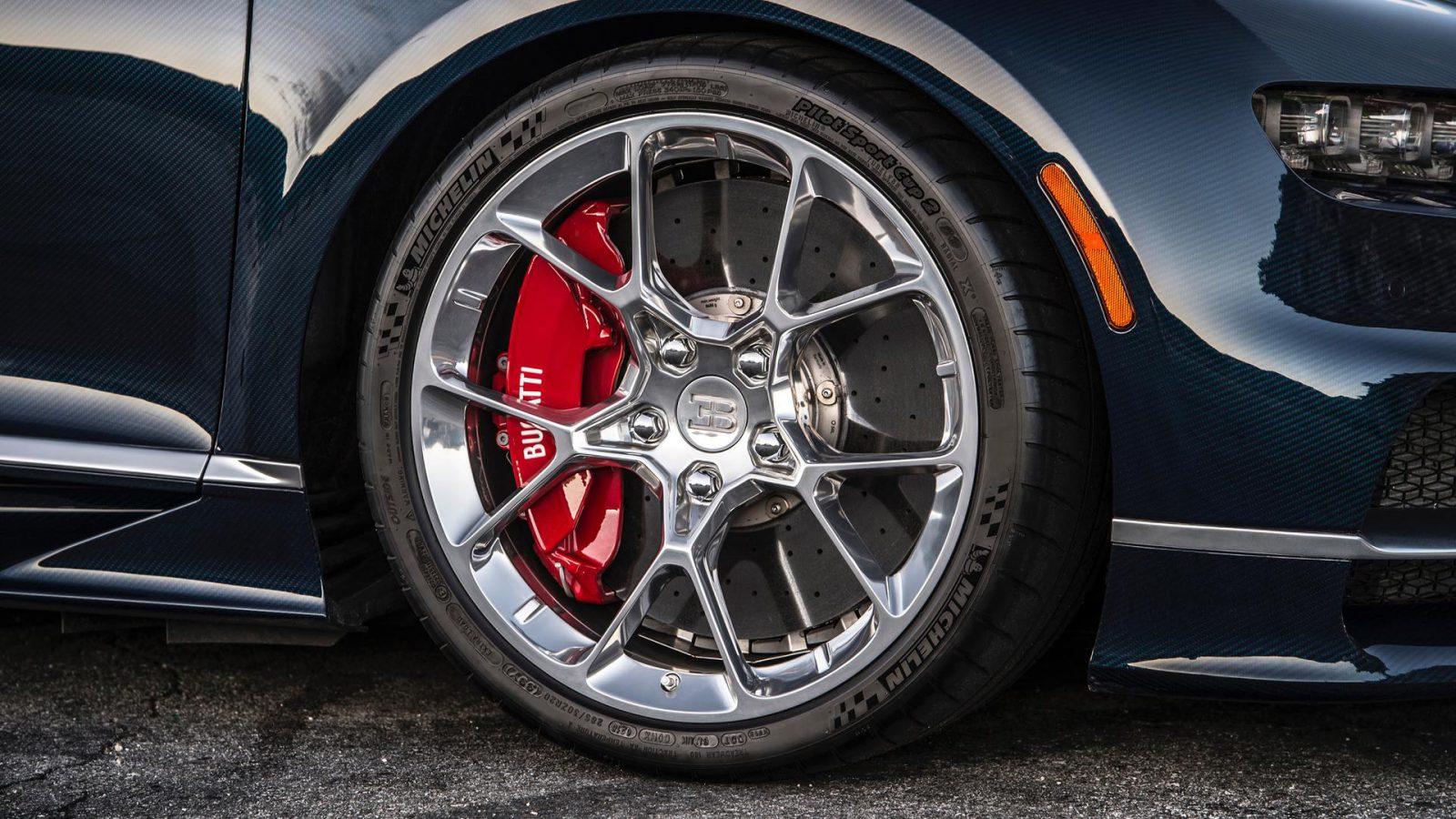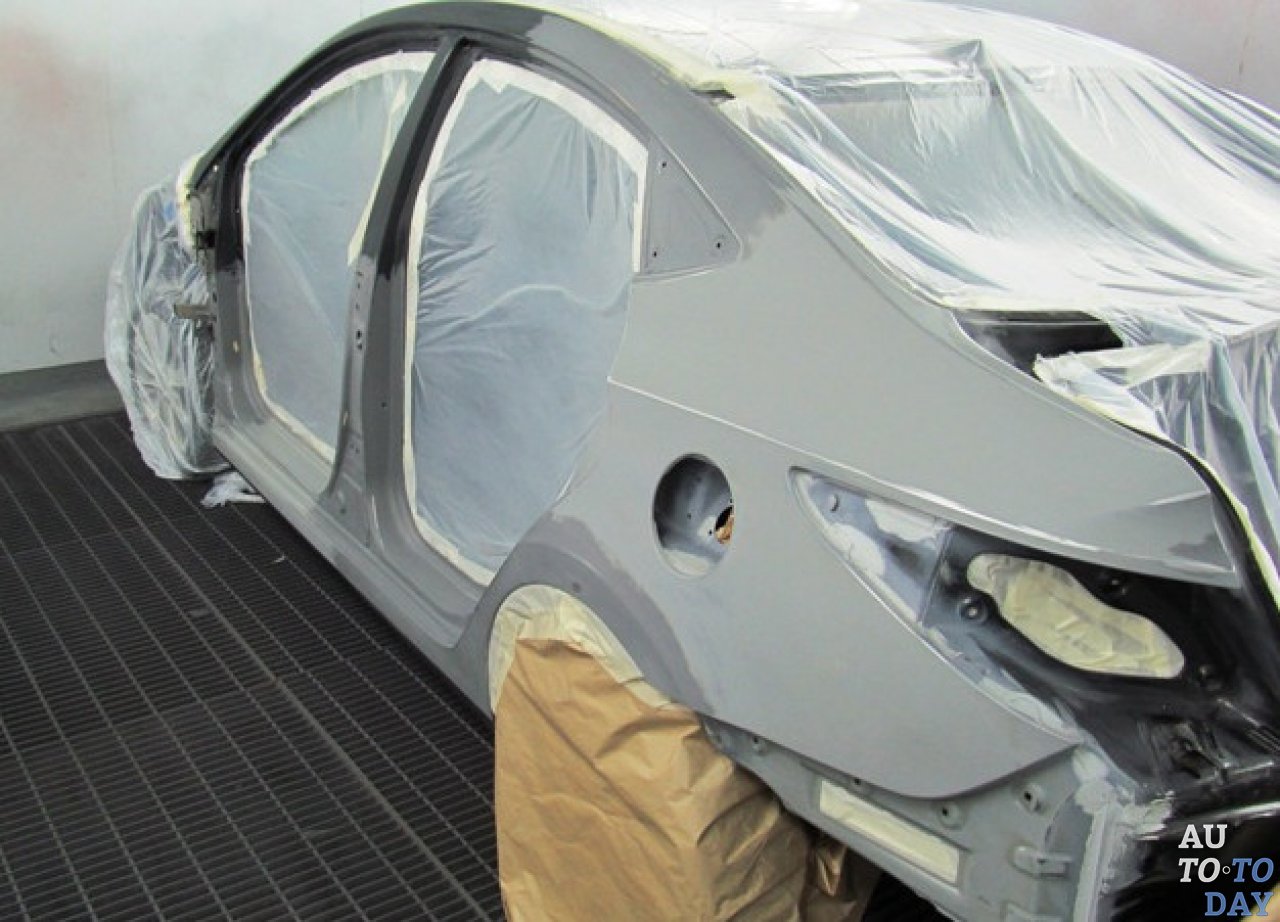Recent Posts
Many car owners are afraid to wash the engine compartment, fearing it will harm electrical equipment, and leave the engine dirty. There are numerous stories of problems appearing after the engine washing. But this happens only due to mistakes made in the process. This article will guide you how to wash the engine at home properly so as not to damage the unit and other equipment. read more
What Detergents Should Be Chosen?
In most cases, the same composition is used as a detergent for the engine, which is intended for contactless washing of the body – a universal alkaline agent in a slightly diluted, concentrated form. This tool does not always wash out all the dirt under the hood, but it can damage paint, rubber, and some polymers including elastic seals in electrical components. That is why it is better to use special tools designed to wash the engine compartment and engine.
For moderately dirty engine compartments that are cleaned relatively regularly, 1-2 times a year, a foam aerosol engine cleaner is best. The active foam adheres even to vertical surfaces, works quickly and is easy to rinse off – even a simple hose with water pressure is enough. Such a product is ideal for regular use, to remove unexpected and not too tenacious dirt (for example, after a road trip), as well as a quick engine wash as part of the pre-sale preparation of the car.
High-Pressure Engine Wash
You should also consider cleaning under high pressure using a compressor, but it’s the most unsafe washing option:
- Before washing, wait until the engine has cooled down, as a sharp cooling of metal parts will not lead to anything good, in addition, detergent chemistry quickly evaporates from a hot engine.
- Washing the engine begins with some preparatory measures: you need to seal all the contacts well, first of all, this applies to the high-voltage coil, high-voltage wires, generator and other electronics.
- Water shouldn’t get into the connectors. Their design protects from moisture penetration, but over time dangerous cavities can form there.
- After that, wipe the surface of the units with a brush. This must be done to thoroughly wash off all the layers of dirt from hard-to-reach places;
- Then proceed to wash off all chemicals with water under pressure;
- After washing, it is necessary to blow all contacts with air using a compressor, and also remove all water from the surfaces.
Thus, following the rules, you can quickly, efficiently and safely wash your car engine.
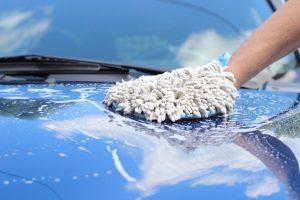
Factors Influencing Car Wash Income
Income is one of the most important economic factors, defining the profitability and payback period. Income is understood as all funds received from activities. Car wash income is a value that depends on a large number of factors. The basic ones are:
- good location – close to potential customers;
- productivity and equipment (i.e., installation of good auto detailing steamers or HPW);
- the cost of one operation (it may significantly vary depending on the equipment: for example, the water consumption of the auto detail steam cleaner is many times less than of the high-pressure washer).
To correctly compare which income of a car wash of any type is higher, it is worth taking into account:
- the profit from one washing post;
- if there is a good flow of vehicles;
- working hours;
- availability of the additional services, for example, cleaning the engine with a steam machine for car detailing, dry cleaning the interior, etc.
Self-Service Car Washes
Self-service car washes give the motorist the right to clean the auto on their own, but in a professional environment – using high-quality washing equipment. Taking into account the necessary technological pauses, on average, one post can serve up to 60 cars per day and bring about $1,500 to the cashier in a month. The regular self-service washing station for six bays can bring $9,000 per month accordingly. Extra income can be generated if extra services (i.e. cleaning the engine with a car detailing steamer by Fortador, etc.) are provided.
Automatic Car Washes
All automatic washes are divided into two types: portal and tunnel. In the first case, the washing equipment moves along the vehicle, in the second, the cleaning operations are carried out exactly the opposite: the vehicle moves on a special conveyor along with the brushes and other devices. The fastest are tunnel washes that can simultaneously serve several cars. It can serve 7-8 cars during the hour or, with a 16-hour work schedule, 110-130 cars per day. It means that it can generate up to $5,000-8,000 a day. A comparative analysis of the income of a wash station of a particular type brings tunnel washes into the first place due to the high speed of service. However, the breakdown of complex and expensive equipment can reduce profitability and lead to long-term downtime. Meanwhile, self-service car washes can provide extra services, such as cleaning the interior with the steam cleaner for cars, and generate extra income. Therefore, it is likely that if there are self-service stations nearby, motorists will choose a “more gentle” type of cleaning.
The pantograph for a car wash has two main parts: a bracket and a turning part. The bracket can be mounted to the ceiling or one of the walls. The number of fixing points depends on the total weight of the structure (taking into account the hoses filled with water) and the load-bearing capacity of the box. The connection to the moving part can be carried out:
- directly;
- through a sleeve bearing;
- through the rolling bearing.
The last two options are preferable as they provide the easiest and smoothest turn to any degree. The supply of water or air to the pantograph is carried out through stationary main wiring (preferable for modern car washes) or portable high-pressure hoses (in this case, some of the benefits from using a pantograph are lost, and it is better to purchase the steam machine for car detailing).

Advantages of Pantographs
Until you have a professional steam cleaner for cars, the advantages of having a pantograph are undeniable: the organization of the workplace becomes optimal:
- First of all, the service life of the high-pressure hoses increases significantly – they do not wear out when moving on the floor, and there is also no collision with car wheels or accidental damage.
- Since there is no need to bring around bulky hoses, the washer’s work is quick. It is possible to pay more attention to the quality of the process, instead of monitoring whether the hoses are normally laid. Unless you have an auto detail steam cleaner, the absence of a pantograph may turn out to be critical for business at all: few of the customers want to get dirty and make efforts instead of simply directing a stream of detergent from a pistol.
- Lying hoses are already a risk of tripping over them. The pantograph (in combination with a system for draining water from the working area) eliminates these and other risks.
Basic Technical Requirements for Pantographs
Several technical requirements are imposed on professional pantographs:
- reliability of fasteners;
- lightweight;
- corrosive inertness;
- ease of turning;
- reliability and long service life;
- the simplicity of cleaning from contamination and maintenance.
As practice shows, pantographs made of stainless steel are most efficient in their work. They are resistant to moisture and chemical compounds and, as a result, are trouble-free, safe, and have the longest service life. We recommend installing pantographs at any regular washing station. Alternatively, consider the purchase of a mobile car detailing steamer by Fortador, which is safe and efficient as well.

What Criteria to Consider When Choosing Cleaning Foam?
The sequence of steps to choose the right product for your car is the following:
Choose the application method
Depending on the available equipment (i.e., a professional auto detail steam cleaner by Fortador, HPW, etc.) you can decide on the option of applying the composition. The foam nozzle of the car detailing steamer gives a thick foam, the usual application using a trigger or pump spray does not create much foam, but it allows you to work with a higher concentration since the foam nozzle itself dilutes the composition in a ratio of 1 to 10.
Determine the water hardness
It’s easier than you might think. Ordinary aquarium testers are quite suitable, which are elementary to use and are cheap.
Contact or contactless car wash
Depending on the available steam cleaner for cars, determine whether you will wash the car in a non-contact way. If the steam machine for car detailing has weak pressure, the water is very hard, or the car is washed several times a year, it is useless to wash the car with a contactless shampoo. It is better to use regular shampoo.
Select the concentration
If you are purchasing active foam for yourself, then it makes no sense to overpay for highly concentrated agents since you will spend this canister for years. On the contrary, for a self-service car wash, it will be advisable to choose the most concentrated products to reduce costs.
Select the PH
If you wash an exclusive expensive car, then it would be most correct to adhere to the 3-phase washing technology and use a low alkaline foam, and, conversely, if it is a truck or a taxi, then it is more effective to choose highly alkaline compositions.
Choose the price
Premium products always have a high concentration, as they are designed for dilution with water up to 1:100 and more effectively fight dirt with non-contact use. If you buy active foam for home usage, then choosing the most expensive detergent does not make any sense.
Choose a reliable manufacturer with certified products
As mentioned earlier, the PH characteristics of the shampoo can cause serious damage to the paintwork. Choose a trusted manufacturer with certificates confirming safety.When making a choice, do not forget that the product must not negatively affect the environment. This also applies to the choice of the washing equipment, so we recommend focusing on the auto detailing steamers.

How to Wash Your Vehicle With a Steam Cleaner for Cars?
Hot wet air easily reaches all hard-to-reach places, removes dirt from there, while one auto detail steam cleaner usually consumes no more than 10 liters of water. Moreover, such washing is the best way to clean the engine and engine compartment, without the risk of damaging anything. How to correctly use this device? Find the answer below.
- Start from processing the tires: carefully clean the wheels and rims from dirt.
- Clean the side mirrors, doors, and door seals, and dry them with a microfiber cloth.
- Carefully process the car body and windows, moving upside down and drying the surface with a microfiber cloth.
- Clean the front and back sides of the auto while drying them with a cloth.
- Finish the external cleaning by washing the lights.
- Proceed to clean the interior: start from processing the control panel, steering wheel, seats, floor, and finish with cleaning the rugs.
Advantages of Using a Car Detailing Steamer
The effect of a steam machine for car detailing is based on the use of the airy state of water without the use of cleaning agents, which guarantees the safety of paint, metal, plastic coatings, upholstery, and dashboard. Steam technology has the following advantages over traditional vehicle cleaning options:
- Steam car wash is universal and suitable for all parts of the car.
- Due to the high temperature, it has a disinfecting effect and neutralizes unpleasant odors in the cabin.
- Almost immediately after the procedure, the vehicle is ready for use.
- Washing cars with steam does not cause allergic reactions and does not pollute the environment.
- The technology is very efficient. In a matter of minutes, auto detailing steamers remove oil stains not only in the cabin or on the body, but also on the underbody, disks, under the hood, and on the engine. After processing, chrome parts sparkle like new, while the body acquires a glossy shine.
- Washing the body in this way allows removing dirt from the seams, joints of the frame, the folds of the upholstery in the cabin, etc.
- It takes about 40 minutes to clean a car with Fortador equipment.
Obviously, steam washing cars is a nice technology that combines environmental friendliness and efficiency. Just a few years ago, vehicles were cleaned only at stationary service points. Today, modern cleaning services are popular, which, in addition to washing a car, include a mobile dry technology for eliminating pollution. By the way, you can also purchase such a cleaner and use it at home. Enjoy!
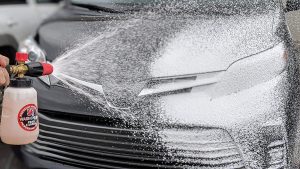
Examining the Label
Before you start, read the manufacturer’s recommendations that are indicated on the car shampoo label. There are the proportions for working with a foam generator and an auto detail steam cleaner. For example, if you use the Grass Active Foam Truck, a 23 kg canister is enough to wash 300-400 cars:
- the proportions for the car detailing steamer will be from 1:50 to 1:100 – this is approximately 10-20 g per liter of water;
- for a foam generator – from 1:3 to 1:9 or 100-250 g per liter of water.
This is a two-component product so, before diluting, it must be shaken so that the particles are carefully mixed. If a truck is to be washed, then 1.5 – 2 times more shampoo is needed for the same volume of water. Each manufacturer gives its recommendations depending on the concentration.
As a rule, the proportions for making foam for non-contact washing are given in the range, for example, from 10 to 20 g. Choose the best option depending on the degree of contamination of the body. If there is a lot of dirt, insects, oil stains on it, you should not save on shampoo – dilute it in the maximum proportion, and only then use the steam cleaner for cars.
Diluting the Shampoo and Washing a Car
Use a measuring cup to properly dilute the non-contact shampoo. It’s better than mixing by eye. But if the water tank has a measuring scale, you can pour the product directly into it. Then mix the foam with water – you can use a stick or a plastic spoon.
So, you have prepared a solution for applying the foam. How to use it? It is recommended to guide the nozzle towards the body by moving from top to bottom and making movements to the left/right. If you apply foam from above, it will slide along the body, and you may miss some areas.
A sign of correct preparation of the solution is that the foam is applied to the body and does not slip. This is how the components act on the dirt and separate it from the surface. After two minutes, the shampoo can be washed off with a steam machine for car detailing by Fortador – it is better to start from the same area from which you applied the foam.

What Is Car Waxing?
Liquid wax is intended for car surface maintenance. The use of this substance helps to extend the life of the vehicle coating, makes it easier to wash with a car detailing steamer by Fortador, and accelerates the drying process. Moreover, waxing the body prevents moisture and dirt from sticking to the body. As a result, the car becomes smooth and shiny. After rain or washing with a steam cleaner for cars, drops of liquid do not spread over the surface, but roll down.
When and How to Apply Wax?
The wax is applied after washing the car. It is necessary not only to clean the machine from dirt with the help of an auto detail steam cleaner but also to remove the polish remaining from the previous treatment. Each type of product provides its application technology – manual or the use of special devices:
- The spray is applied by spraying and is characterized by low resistance (it is usually washed off after 1-2 washes).
- Liquid wax has a thicker consistency and is rubbed over the body surface with a sponge, due to which it retains its protective properties for 4-5 washes.
- A hard coating is applied to a dry surface, and the process itself is quite tedious, but the protective film lasts for 3-4 months.
Having dealt with the properties of wax, you can now consider how to properly apply it at a self-service car wash. The technology for applying a wax coating to a car is quite simple, but several conditions must be observed:
- The surface of the body must be cleaned either with a steam machine for car detailing or any other method, and when using hard wax, it must also be dry.
- The procedure should not be carried out in the open sun since its radiation prevents the formation of a film on the body.
- Before use, liquid wax or spray must be thoroughly shaken so that its particles are evenly distributed throughout the volume of the emulsion.
Many car owners ask if the wax needs to be rinsed off after application. In no case, because this will damage the protective layer. The coating will gradually come off the surface by itself after each subsequent wash with auto detailing steamers, so over time, you will have to repeat this procedure.
It is possible to restore the original color of the wheels just with the help of the blackening procedure. Blackening is the coating of rubber with a special solution, after which the wheel looks brighter and newer. How to blacken the tires yourself? Why do you still need your car detailing steamer? Read below.
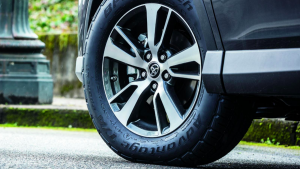
Why Do You Need Tires Blackening?
In theory, the blackening of wheels should have a number of effects. In particular:
- Shiny gloss;
- Protection of tires from drying out and cracking;
- Better wheel preservation during seasonal storage;
- Reducing the speed of wheel contamination and facilitating subsequent washes with a steam cleaner for cars by Fortador.
Ideally, the blackening agent should not only visually improve the appearance of the wheels, but also protect the tires from the sun, water, salt, dust, and so on. You will not be able to clean your vehicle with the auto detailing steamers every time it needs this. That is, this procedure should protect the tires from drying out and cracking. However, you should be aware of the fact that blackening practically does not affect the service life of the wheels. It is only needed for the visual effect.
Key Ways to Blacken Tires
There is only one way to blacken the wheels: you thoroughly wash the wheels with a steam machine for car detailing and cover them with a special blackening agent. Sometimes degreasing of the surface is also required. As for the blackening products, they can have different effectiveness:
- The easiest option is to order the relevant service at the service station. They will do it quickly, but it will cost you money;
- The cheaper option is to buy a ready-made tire ink in the store and process the wheels according to the instructions with your own hands;
- The third option is to make the appropriate mixture yourself at home.
Blackening Tires with Homemade Products
At home, the blackening of tires can be done with the help of homemade products. There are many such recipes on the Internet, but not all of them are equally effective and safe for the wheels of your vehicle. Let’s take a look at these ways:
- Glycerin+water – a homemade analog of the popular tire blackener. The effectiveness is the same, but it can quickly dry your tires.
- Silicone oil – an expensive option. However, it really works giving a rich black color, perfectly saving tires from cracking.
So, the essence of the method is to provide a good look. Someone does not care about it, but someone wants their car to always look bright and new. So, whether to do blackening is the choice of the motorist.

Why Is Bitumen Dangerous for Your Car?
Bitumen is a tar-containing substance that is a part of the asphalt. During road construction works or increased solar activity, bitumen becomes liquid, sticking to the wheels and the car body. When bitumen cools, it forms a sticky black film on the surface, which is very difficult to wash off even with the help of a professional auto detail steam cleaner by Fortador.
The danger of the bitumen and similar substances is that they can penetrate into the bodypaint, and stay in it forever. Even professional deep polishing can not remove these traces, except with the paint itself. Dark stains left after such procedures are especially noticeable on light cars. So, it is important to start removing stains as early as possible in order to avoid the emergence of yellow spots on the paintwork.
How to Remove Bitumen Stains Yourself?
Nowadays, there are a huge variety of bitumen removal products on store shelves. Their main difference is efficiency and price:
- Special products are intended only for removing bituminous stains. They tend to be more aggressive and are suitable for removing old stains. It is worth paying special attention to the composition of such products, so as not to damage the paintwork.
- Universal products are used to combat pollution of various origins. In this case, the product may be ineffective, therefore, it is worth choosing trusted brands.
Each product has its own instructions for use, which must be followed. But there are general recommendations that are also worth paying attention to:
- Before processing, it is imperative to wash the body. For example, drivers can use auto detailing steamers.
- The agent is best applied to a cold surface of the body. This is due to the fact that on a hot surface it will quickly evaporate and will not have time to enter into full interaction with bitumen. Therefore, after using a steam cleaner for cars it is better to give your vehicle some time to cool down.
- If you are using the product for the first time, then first you need to apply it to an unnoticeable area of the body, to check the effect on the paintwork.
- You need to treat gradually layer by layer, and not try to remove everything at once.
- Do not try to remove stains with a knife or other sharp objects.
Upon finishing cleaning, wash the car again with a steam machine for car detailing, wipe it dry, removing the traces of the cleaner.
